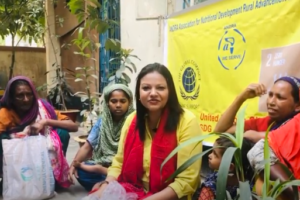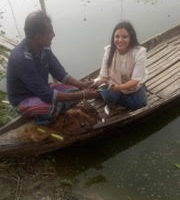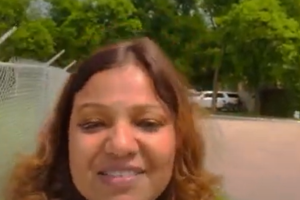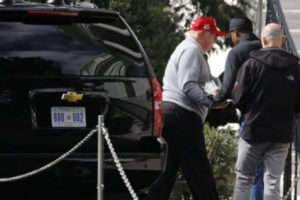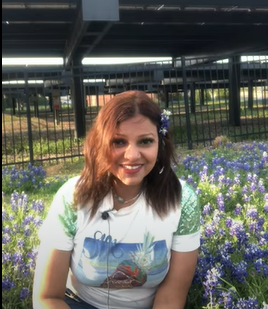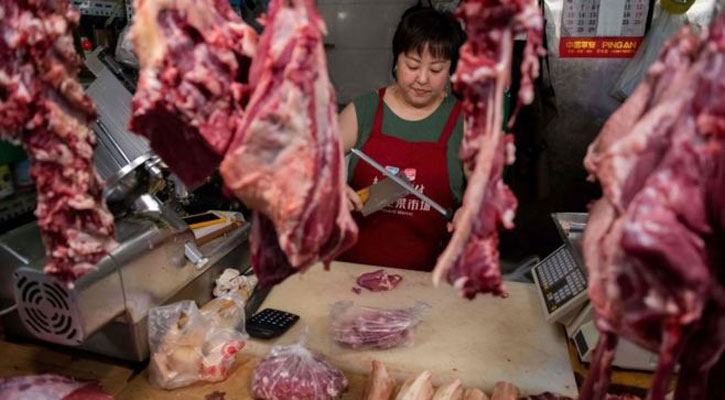It is one of the fastest-growing coronavirus hot spots in the nation, but there are no long lines of cars piled up for drive-thru testing and no rush of appointments to get swabbed at CVS.
That’s because in the rugged, rural expanse of far West Texas, there is no county health department to conduct daily testing and no CVS store for more than 100 miles. A handful of clinics offer testing to those who are able to make an appointment.
Out past the seesawing oil pumpjacks of Midland and Odessa, where roadrunners flit across two-lane roads and desert shrubs freckle the long, beige horizon, the Big Bend region of Texas is one of the most remote parts of the mainland United States and one of the least equipped to handle an infectious disease outbreak. There is just one hospital for 12,000 square miles and no heart or lung specialists to treat serious cases of COVID-19.
But in a sign that the virus is surging nearly everywhere, the counties that include Big Bend ranked among the top 20 in the nation last week for the most new cases per capita.
Big Bend, best known for its sprawling national park and the artist town of Marfa, offers an extreme example of the danger playing out across the United States, as the virus blazes more widely and furiously than ever before, driving deaths to levels not seen since the spring and thrusting many places into crisis at the same time. From California to Texas to Mississippi, hospitals are filling up, and health officials in rural communities increasingly fear that they are on their own.
“There is no neurologist; there is no long-term care specialist,” said Dr. J.P. Schwartz, the health authority in Big Bend’s Presidio County and a physician at a local clinic. “We have no care to help them whatsoever. There is not even a nursing home out here.”
Even as hospitalizations and deaths in Texas near their summer peaks, local officials fear they have little power to intervene beyond the measures that Gov. Greg Abbott, a Republican, has put in place.
“My hands are tied,” said Eleazar R. Cano, the county judge in Brewster County, who said he had been advised against imposing a stay-at-home order or other stricter measures that could violate the governor’s order.
Cano, a Democrat, compared governing through the pandemic to driving his truck through the desert on an empty gas tank, with no cellphone service to call for help.
“It’s helpless, frustrating, close to panic mode,” he said.
Driving the long miles between Big Bend’s sparsely populated towns, it is hard to fathom how a virus that thrives on human contact could flare in a place with so much wide-open space. Hawks reign in the big blue skies. Cellphone service is spotty. Christmas decorations along the road are not on people’s homes but on their ranch gates.
Yet somehow, new cases have exploded in recent weeks.
In Brewster County, a sprawling behemoth with 9,200 people spread across 6,000 square miles, more than half of the 700-plus known cases have been identified in the past month. In neighboring Presidio County, with 6,700 people near the border with Mexico, cases have quadrupled in the past two months, from less than 100 to more than 470. Both communities skew older, with people 65 and older making up about a quarter of the population.
The Lost Horse Saloon in Marfa, Texas, on Monday, Dec. 7, 2020. Tourism at Big Bend National Park, and in Marfa, a city known for its artist community, is thought to be one reason for the area’s spike in COVID-19 cases. (Joel Angel Juarez/The New York Times)The Lost Horse Saloon in Marfa, Texas, on Monday, Dec. 7, 2020. Tourism at Big Bend National Park, and in Marfa, a city known for its artist community, is thought to be one reason for the area’s spike in COVID-19 cases. (Joel Angel Juarez/The New York Times)“The numbers are going straight up at this point,” said Malynda Richardson, emergency medical services director for the city of Presidio, who coughed sporadically as she herself recovered from the icy chills and knockout fatigue of COVID-19.
There are a number of reasons for the spike.
The area is so remote that local residents have to travel to El Paso or Odessa for doctor’s appointments and to buy necessities at Walmart. With cases soaring across West Texas, the virus may have traveled back with them. Officials also cited everyday movement to and from Mexico, cases among young people at Sul Ross State University and a surge of tourists undeterred by the pandemic.
Visitation was up 20% at Big Bend National Park in October, park officials said, and on Thanksgiving weekend so many cars clogged the park it caused a traffic jam. In the liberal artist outpost of Marfa, young people from Austin and Dallas roam the town, sipping almond milk lattes and photographing murals that ask existential questions like, “Is austerity an illusion?”
A recent art installation caused a stir with a blatant message against tourism during the pandemic: “Everyone here hates you.”
But tourism, it turns out, is not the biggest part of the problem.
The area’s limited contact tracing shows more localized spread — in bars, in multigenerational homes and through people who ignore positive test results and continue to work and socialize as normal.
In Alpine, the largest city, with a population of 5,900, residents wear masks with their cowboy hats to shop at Porter’s grocery store but take them off to eat indoors at restaurants in town. There is far from universal agreement about whether masks are necessary and effective. In a sign of the dispute that has played out on and off social media, the county was left without a local health authority when the doctor in the position, a pediatrician working on a volunteer basis, quit this fall after facing pushback from residents who opposed mask orders and other restrictions.
Brewster County, which includes Alpine, has already instructed bars to close and reduced indoor dining at restaurants from 75% capacity to 50%, as required by the governor’s order for counties with a high proportion of COVID-19 hospitalizations. But enforcement is spotty, and the governor has barred local officials from imposing rules that are stricter than his own.
With resources scarce, local health clinics are a primary option for testing, but even then, the swabs have to be driven three hours to El Paso and flown for processing in Arlington, outside Dallas. The National Guard also offers periodic testing, and in response to the growing crisis, new mobile testing vans were scheduled to arrive this week.
For those who do get seriously sick, the hospital, Big Bend Regional Medical Center in Alpine, has just 25 beds and a makeshift COVID ward where patients have been sequestered at the end of the lone, L-shaped hallway.
Dr. John Ray, a family practitioner who works shifts at the hospital, said the hospital on one recent day got back-to-back calls about incoming coronavirus patients. One of them had to be transferred to a bigger hospital in Odessa to receive specialized care.
Not long afterward, Ray said, he saw the patient’s obituary in the paper.
“I don’t want to see Alpine like the pictures you see in New York, just people dying in hallways waiting for a bed,” said Ray, 44, who grew up in the small East Texas town of Troup, moved to Wisconsin for his residency and returned to Texas afterward, settling in the Big Bend region in 2013 for the beauty and the people.
He and his wife, also a doctor, usually treat a caseload of strep throat, urinary tract infections and pregnancy visits. Now, he said, “it’s COVID, COVID, COVID.”
Across West Texas, higher-level care hospitals are also full. El Paso, which was recently so overrun with infection that it brought in mobile morgues, is still recovering from its own virus surge. In Lubbock, as many as 50% of beds were recently filled with COVID patients, and on a particularly bad day last week, the city reported that it had run out of hospital capacity altogether.
Ray fears there may come a day when more seriously ill patients who would normally be transferred elsewhere will run out of options.
“To put it bluntly,” he said, “if you can’t go somewhere else, you are going to die here.”
A spokeswoman for the Big Bend Regional Medical Center said that the hospital has had enough room so far and has added ventilators, oxygen tanks and nurses to prepare for a surge. Of nine patients in the hospital Wednesday, four had COVID-19.
Still, many remain worried. Simone Rubi, 46, a graphic designer and musician who owns a coffee shop in Marfa, about 30 minutes’ drive from the hospital in Alpine, hung a poster outside her to-go window summing up the precarious situation in four words: “Small town, no hospital.”
“There will be no place for us to go if we get sick — that’s the bottom line,” she said, sitting on a picnic bench outside her shop on a recent Saturday morning.
“We’d have to drive to Dallas,” said her husband, Rob Gungor, who said he had asthma and had resigned himself to making the nearly eight-hour drive to stay at an Airbnb close to a major hospital if he contracted the virus, to be nearby in case he took a turn for the worse.
Like most people in Marfa, which has accepted masks more readily than some other Big Bend towns, he wore a mask even while outdoors.
“Maybe Phoenix,” he added, “because it’s only a nine-hour drive.”
For those who live in even more rural parts of West Texas, navigating the coronavirus spike has come with consequences far beyond the virus itself.
In the border community of Terlingua, there is just one full-service ambulance for 3,000 square miles. Paramedics have on a few occasions had to drive coronavirus patients three hours round trip to the hospital in Alpine, leaving the region uncovered for other serious emergencies.
“That has always been our draw — it’s an isolated, beautiful, unadulterated landscape,” said Sara Allen Colando, county commissioner in Terlingua.
But with cases rising, the wilderness is also its own kind of peril.
“If they have to take someone with COVID to God knows where, how long is it before that ambulance is back in service?” she said. “Who is going to be there to answer the call?”





